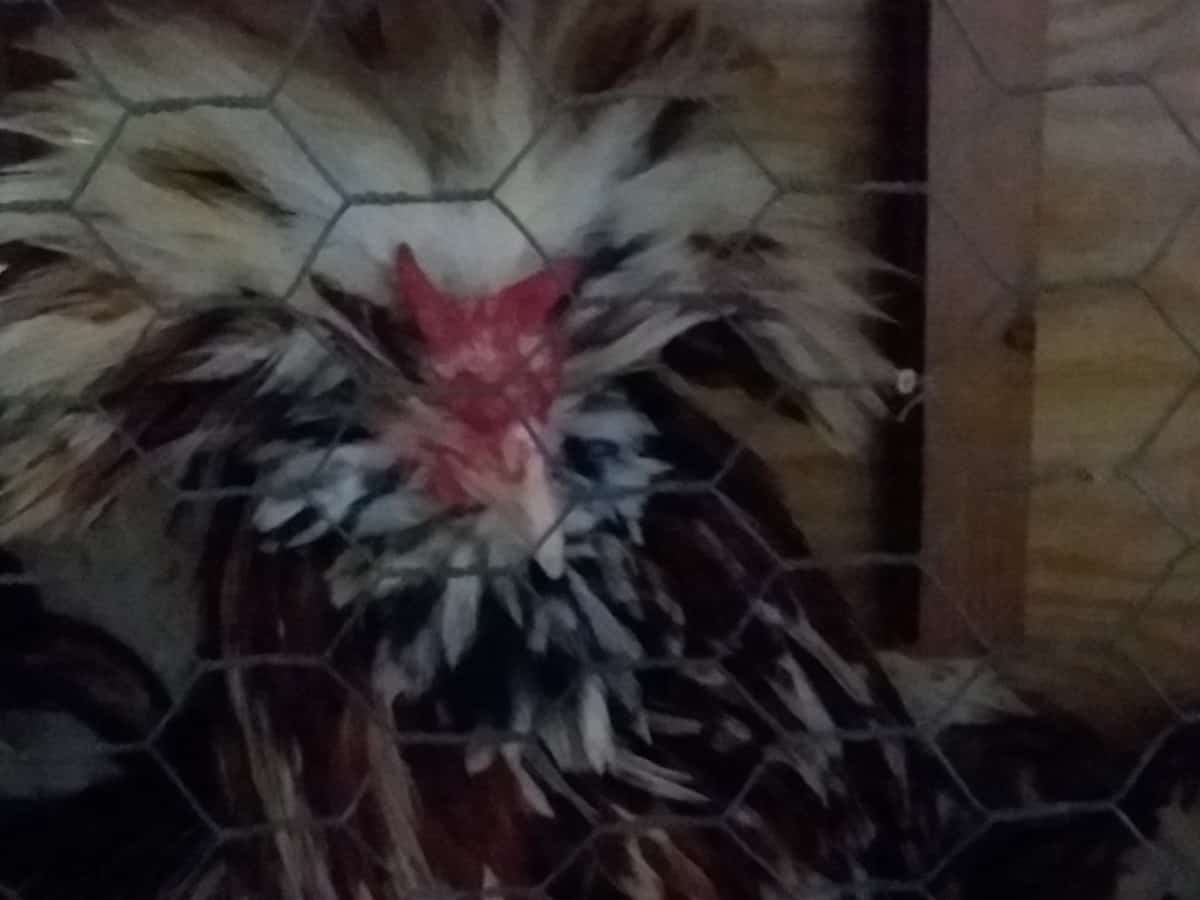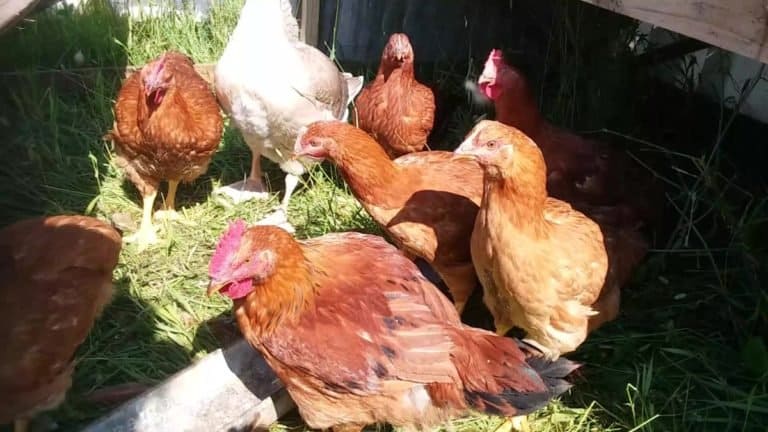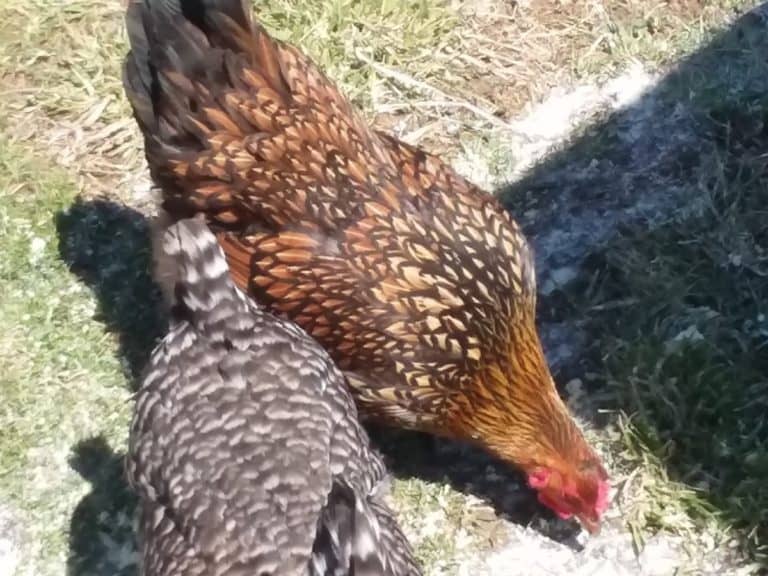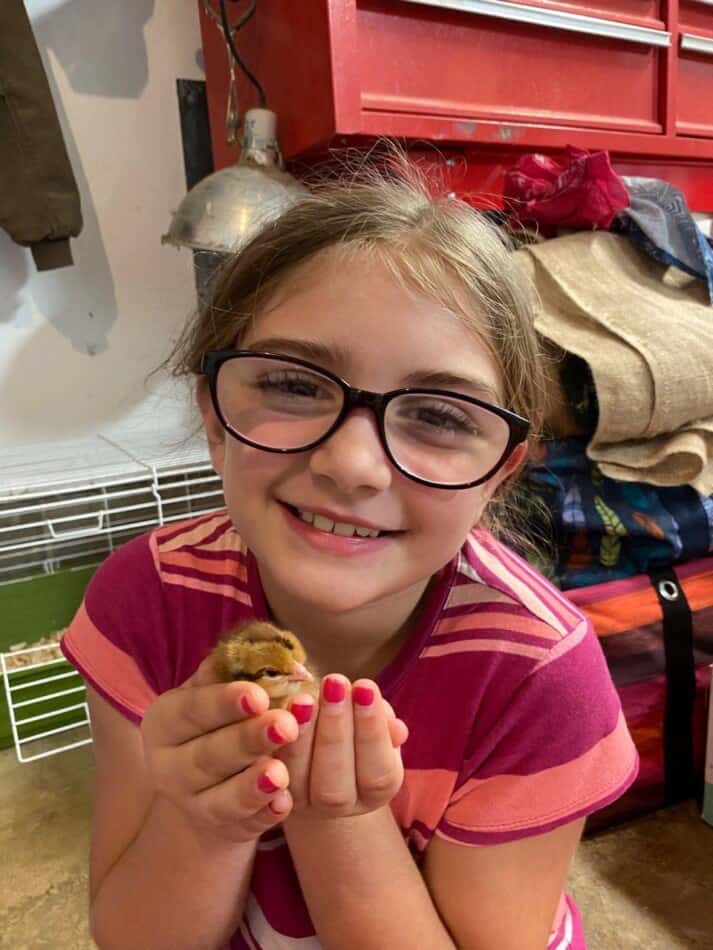12 Crested Chicken Breeds: Fun Birds For Your Backyard
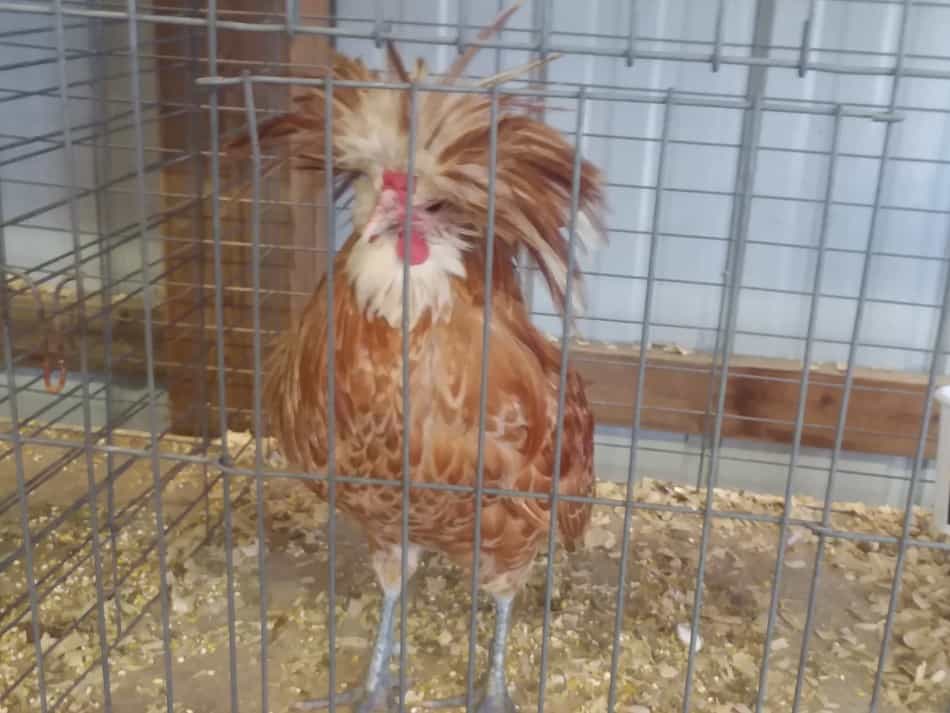
Crested chickens (or chickens with afros) are real lookers! Just about anyone would enjoy having a few of these around, but how do you decide which one to get?
There are a lot of choices here, let’s look into these cool chickens!
There are 12 common chicken breeds with crests. Standard crested chickens are: Polish, Sultan, Appenzeller Spitzhauben, Houdan, Crevecoeur, and Brabanter. Crested bantams are: Burmese, Polish, Bearded, Houdan, Silkie and Brabanter.
Crested chickens are eye catching birds for sure. There are multiple breed options and size and color choices.
Crested chickens come in both standard and bantam sizes (see the bottom of the page for specific definitions of each).
Click here for my article on calm chicken breeds, if you want to choose your new chickens by temperament as well.
Generally, crested chicken breeds need more predator protection than most other chickens because the crest of feathers blocks out some of their vision.
Additionally, all breeds with a full crest need a special waterer so they don’t get their crest feathers wet (or frozen) when drinking.

When you have decided upon your breed of choice, read my article How To Choose A Chicken Hatchery
Standard Size Crested Chickens are full size
| Standard Breeds | Main characteristics | Main purpose |
| Polish | most popular crested breed | eggs |
| Sultan | all white rare breed | enjoyment |
| Appenzeller Spitzhauben | active, free ranging bird | eggs |
| Houdan | famous for flavor | meat |
| Crevecoeur | fast growing rare breed | eggs |
| Brabanter | has a beard and blue legs | meat |
| Silkie | frizzled feathers | enjoyment |
Standard Polish chickens lay white eggs
Origin: The Netherlands
Size: standard
Eggs or meat: Eggs 2-3 eggs per week, eggs are white and small to medium in size
Physical Characteristics: big poof of feathers on the head in both males and females, (poof is rounder in hens and more wild and messy looking for roosters), clean legged, v-comb, upright body carriage
Colors: golden laced, buff laced, white crested black, silver laced, white crested blue, black, white, cuckoo, black mottled, and white black crest
Temperament: friendly but can be jumpy since they can’t see so you can surprise them with unexpected movements
Availability: at most hatcheries
When it comes to crested breeds of chickens the Polish (also called Dutch Crested) are the most popular and your best bet as far as availability.
The Polish chickens come in a variety of colors and tend to be calm.
We had a small flock of the white crested black variety.
They are a fun chicken to have around and relatively easy to catch since they can’t see through the feathers very well.
The white crested black Polish are more high strung than the other Polish breeds and they tend to lay more eggs than the other varieties.
At least in our area, the Polish chickens are a popular breed for the kids to show at the county and state fairs, since they come in a variety of colors, have a unique look to them and are calm.
As far as the colors go there are three main differences, body and crest the same color, crest white and differing colored body or black crest with a white body.
Our local hatchery, Meyer Hatchery has a good selection of crested breeds of chickens, click here to see their catalog. (Scroll down for pictures.)
Sultan chickens are a rare breed
Origin: Turkey
Size: Standard but they are very small birds
Eggs or meat: Eggs 2-3 eggs per week, light brown shell color and small to medium in size
Physical Characteristics: crested head, beard, muffs, feathered feet, blue shanks (legs) and a fifth toe
Colors: white
Temperament: very friendly and easy going
Availability: at most hatcheries
Sultans are a calm, friendly little chicken that got it’s name from the fact it was the bird loose in the castle gardens owned by the sultan of Constantinople.
While Sultans are certainly a small chicken they are not a bantam, they are a standard chicken.
Sultans weigh around 4.5 pounds and have loads of feathers.
While all chicken appreciate a stroll around your yard pecking for snacks, Sultans should mainly be kept in a clean, mud free area to keep their feathered feet clean.
If you are interested in helping promote a rare poultry breed, Sultans are one to consider.
Rare breeds did not remain popular as agriculture got more industrialized.
Rare breeds make wonderful pets and need more poultry enthusiasts to raise them to secure the population of these birds for the future.
Appenzeller Spitzhauben
Origin: Switzerland
Size: Standard, a small to medium size chicken
Eggs or meat: Eggs 2-4 eggs per week, white, medium size
Physical Characteristics: has a crest of more upright feathers and a v-comb
Color: silver spangled is the color available in the U.S. but the breed also comes in black spangled, blue spangled, gold, and gold spangled
Temperament: active and adaptable
Availability: at most hatcheries
The Appenzeller Spitzhauben has a smaller crest than a Polish chicken, but the crest sticks up more, rather than looking groomed and fluffed.
Spitzhauben chickens are an active, alert breed adapted to life in the mountains of their home country.
This makes them great as free range birds but not so good in confinement. They love to roost even making it into trees!
Interestingly enough, the Appenzeller Spitzhauben is the national bird of Switzerland.
Houdan chickens are famous in France
Origin: France
Size: Standard
Eggs or Meat: meat-they are a table breed but also a good layer of large eggs
Physical Characteristics: large heavy bird, clean legs, fifth toe, full crest, three clump beard, and a leaf comb
Colors: black mottled, white and lavender with the black mottled being the color variety that is by far more prevalent
Temperament: very docile and make great show chickens
Availability: rare and not commonly listed with all hatcheries
Houdans were the main table breed of France in the nineteenth century. These birds are fast growers and massive looking with a full crest.
Since they are a calmer breed it is best to not let them be completely free range or they will become lunch for a local predator.
Houdans tend to be broody (like to sit on eggs) but they are too heavy and tend to break eggs.
For best results, put fertile eggs under a lighter breed of chicken to do the brooding for you or into an incubator.
Crevecoeur is a rare chicken breed
Origin: France
Size: Standard
Eggs or Meat: meat-table breed
Colors: black, white and blue
Temperament: placid and easily tamed
Availability: rare and not available at all hatcheries
The Crevecoeur is a calm, fast growing chicken that is rare outside of France. They are also good layers of large white eggs.
Crevecoeurs need to have shelter from the weather and predators, but will do well foraging about your grass on nice days.
Crevecoeurs are a rare breed in the U.S. and need more people to raise them.
According to The Livestock Conservancy website Crevecoeurs are among the rarest of chicken breeds so are the most in need of new enthusiasts.
Brabanter chickens have blue legs
Origin: North of Europe
Size: Standard
Eggs or Meat: meat
Physical Characteristics: blue slate legs, “shaving brush” crest, and a three clump beard
Colors: black, white, blue laced, cuckoo, golden black half moon spangled, silver black half moon spangled, yellow white half moon spangled, golden blue half moon spangled and lavender
Temperament: agreeable and placid
Availability: rare and not available at all hatcheries
The Brabanter is a rare chicken with a full beard and an upright crest. They are very calm so do not need much room in their run.
Since they have a smaller crest than some of the other breeds, they do not need a special waterer.
Silkie chickens are popular
Origin: China
Size: Standard but are a small chicken
Physical Characteristics: fluffy soft feathers, low to the ground, dark skin, muscles and bones
Colors: many colors including: white, black, multiple penciled partridge, multiple penciled silver partridge, gray, cuckoo, red, buff and blue
Temperament: friendly and easy to tame, great for kids
Availability: easily found
The Silkie is a fun and surprisingly hardy chicken that is easy to have around.
We have a few of these birds and they just roam about basically taking care of themselves.
Silkies do not fly, which makes them very easy to fence.
They are not great egg producers but they are amazing brooders. These gals love to set and raise chicks.
Another plus for Silkies is that while they definitely have plenty of poof, they do not need a special waterer.
Chicken Breed Chart is a PDF from MSU showing a good number of breeds, all with pictures, egg laying ability and care recommendations.
Bantam Size Crested Chickens are not all true bantams
| Breed | Main characteristic | Bantam or Miniature |
| Burmese | easy to tame hens | True bantam |
| Polish | calm and available | Miniature |
| Crested Bearded | three clump beard | True bantam |
| Houdan | calm and kid friendly | Miniature |
| Silkie | frizzled feathers | Miniature |
| Brabanter | blue legs, hard to find | Miniature |
Burmese Bantam is a true bantam
Origin: Burma
Size: Bantam
Physical Characteristics: feathered feet, low stance, lightly crested head, three clump beard and a high set tail
Colors: black is the only recognized color, with white, black tailed yellow and golden necked black up and coming (just not perfected yet)
Temperament: calm and trusting, hens are especially easy to tame
Availability: not available at all hatcheries
The Burmese bantam is a vigorous and fertile breed with fast growing chicks.
Since they have feathered feet, they need to be kept inside unless their run is dry, but they definitely like to roam your grass.
Polish Bantams are miniatures
Origin: The Netherlands and the United Kingdom
Size: Bantam
Physical Characteristics: same as the standard Polish
Colors: black, white, laced blue, cuckoo, black mottled and buff
Temperament: placid, easily startled by unexpected approach
Availability: at most hatcheries
The Polish bantam has a calm manner. It needs some tending since the crest will make it easy to catch for you as well as any predators.
All Polish need a shelter and limited foraging, to keep their feathers especially the crest, looking good.
Crested Bearded Bantam is a true bantam
Origin: The United Kingdom
Size: Bantam
Physical Characteristics: large full crest with round shape, blue legs, three clump beard and no visible comb; there are also frizzled varieties
Colors: golden black laced, silver black laced, yellow white laced, black, white, laced blue and cuckoo
Temperament: pleasant to be around, hens are trusting, tame and placid
Availability: not available at all hatcheries
Houdan Bantam is a miniature
Origin: The United Kingdom in the 1940’s
The Houdan Bantam is not a very popular breed.
This one will be hard to find birds, but worth it if you would since they are calm and kid friendly.
For the full breed description see the standard size Houdan section listed above.
Silkie Bantam is a miniature
Origin: The Netherlands
Size: 21 oz. (half size of the normal Silkie)
The remaining characteristics are the same as the standard size Silkie listed above.
Brabanter Bantam is rare
Origin: The Netherlands
Brabanter Bantams were first shown in 1933 in the Netherlands. These birds are normally not frequently seen outside of their home country.
See the standard size Brabanter description for the details of the breed.
Standard Size Chickens are bigger
Standard size chickens are the full size birds that most people will have in their coops.
Standard chickens are mainly egg layers or meat breeds. The meat breeds are also commonly called table breeds.
A few varieties of chickens are in the middle not super star layers or amazing meat birds just in the middle for both, which is called dual purpose.
“Bantam” Chickens are miniatures
Many chicken breeds have a look alike, smaller version commonly called a bantam variety.
Actually, the proper name for a small version of a large chicken is diminutive, miniature or dwarf fowl.
These “bantams” look just like the bigger standard size chicken just in a smaller package.
Bantams are very popular with both chicken enthusiasts who like to participate in poultry shows and hobby raisers.
We have a few running about the barnyard. They take care of themselves and tend to be great setters!
For example, in this article there are standard size Polish chickens and “bantam” size Polish chickens.
Since these birds come in two sizes, the small variety is actually a miniature form of the larger breed, not a true bantam.
To keep things simple, the article refered to all small size chickens as bantams whether or not they fit the specific definition.
True Bantams are special breeds
True bantams have no large variety, they are only the original small size chickens.
Resources: The Complete Encyclopedia Of Chickens by Esther Verhoef and Aad Rijs, My Pet Chicken website, Cackle Hatchery website and the Meyer Hatchery Catalog
Related Questions
Do Polish chickens lay eggs?
Actually, in all breeds of chickens the hens lay eggs.
Polish chickens are not known as great egg layers, but the white crested black Polish lay the most eggs of any Polish chicken variety.
Are Polish chickens aggressive?
Polish chickens are usually quite calm and docile, especially the hens.
